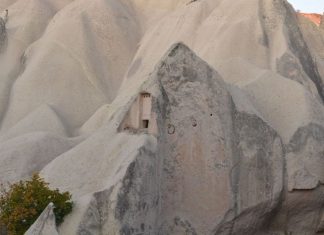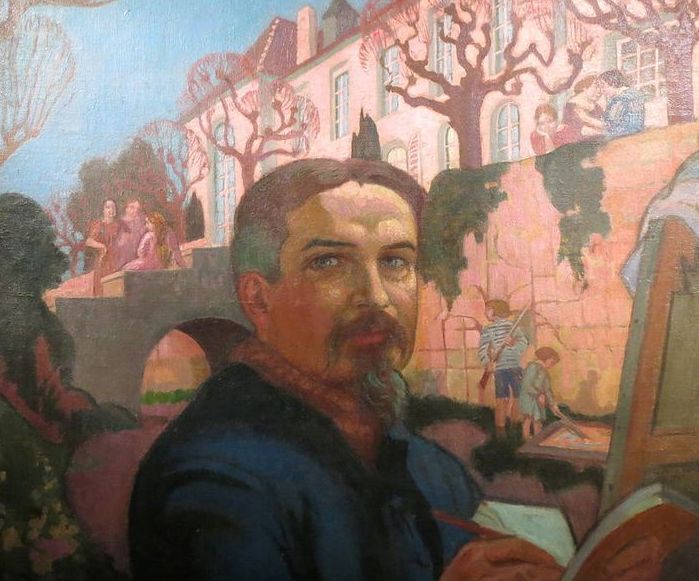Saksagan
The Apostle Paul
A Journey of Faith and Conversion
Among the apostles, Paul stands out as an extraordinary traveler, navigating the challenges of the ancient world to spread the new faith. His remarkable journeys, marked by endurance and tenacity, played a pivotal role in the early Christian movement. This article explores the life and travels of Paul, born Saul, and the transformation that led him to become one of Christianity’s most influential figures.
Early Life and Background
Paul, originally known as Saul, was born in Tarsus, southern Turkey. After his conversion, he changed his name to Paul, influenced by converting Sergius Paulus. Described as a stocky man with a bald head and a grey, bushy beard, Paul studied Jewish law in Jerusalem under the renowned rabbi Gamaliel (Acts 22:3). His Roman citizenship, inherited from his parents, afforded him special rights and protections, playing a crucial role in his ministry Read more
Pioneer in Ancient Philosophy and Mathematics
Thales of Miletus
Thales of Miletus, a renowned figure in ancient Greece, made significant contributions to philosophy and mathematics. While some of his ideas were influenced by travels and foreign knowledge, Thales played a pivotal role in shaping the foundations of Greek mathematics and natural philosophy.
Thales’ Knowledge Gathering
Thales spent considerable time traveling and engaging in trade. It is believed that during his travels, he gathered knowledge and brought it back to the Greek world. One notable instance was his prediction of the eclipse in 585, likely influenced by Babylonian priests’ research.
Geometric Theories and Foreign Influences
Thales introduced geometric theories that had possible roots in Egypt. These theories became fundamental in Greek mathematics, including the bisecting of a circle by a diameter and properties of triangles. Thales’ mathematical insights, such as proportional sides in triangles,
Thales of Miletus
A Multifaceted Mind in Ancient Greece
Thales of Miletus, a prominent figure in ancient Greece around 585 B.C.E., stood out as a statesman, engineer, astronomer, mathematician, and philosopher. His diverse pursuits reflected the intellectual curiosity characteristic of academics in that era.
Thales’ Varied Expertise
Thales’ pursuits covered a wide range of disciplines The Apostle Paul. Regarded as the “only wise man” extending his speculations beyond the practical, he gained a reputation as a thinker who ventured into realms beyond immediate utility. Plato’s anecdote of Thales falling into a well while stargazing highlighted his commitment to celestial observations, sometimes perceived as imprudent.
Practical Applications of Celestial Observations
Contrary to some skepticism, Thales’ observation of the stars contributed practically to navigation. By measuring the stars of the
Deciphering Cosmos
Early Greek Efforts to Grasp Celestial Movements
Introduction
From the discovery of Sirius by Egyptian farmers heralding the annual Nile flood to civilizations around the Mediterranean, ancient societies sought to understand celestial movements as a crucial guide for earthly activities. Observing lunar phases and daylength variations served as essential indicators for planting, harvesting, sailing safety, and managing livestock. Millennia of observations later, we now take for granted the intricate details requiring inventiveness in both observation tools and recording systems. The ancient Greeks faced similar challenges, blending native technology Ionian Revolution, inquiry, and insights from neighboring civilizations like Egypt and Babylonia. Transitioning from a supernatural worldview to one grounded in elements, mathematics, and physical laws, the Greeks embarked on explaining the ever-changing sky. This paper surveys the Greek
Ionian Revolution
Navigating the Skies with Thales of Miletus
Introduction
In the early migrations around 11th century BCE, many Greeks settled along the Turkish coast, engaging in cultural exchanges with neighboring civilizations like the Lydians and Persians. This mingling, detailed by Herodotus (Hdt.1.142) and Strabo (14.1.7), laid the groundwork for the Ionian Revolution. Ionian scholars, connected with both western relatives and maritime cultures such as Egypt, initiated a transformative shift in their understanding of the cosmos. By the sixth century BCE Celestial Views in Ancient Greece, they explored the idea that the universe operated on physical, mechanical principles rather than relying solely on divine whims.
Thales of Miletus (c. 585 BCE): Pioneer in Astronomy
Thales, often hailed as the first philosopher, contributed significantly to early Greek astronomy. While sources about him are limited, he gained f
Celestial Views in Ancient Greece
Insights from Homer and Hesiod
Introduction
Homer, renowned for his epic tales of war and long journeys, provides subtle glimpses into the Greek understanding of the universe. Describing the heavens as a solid inverted bowl, he envisions aether, a radiant expanse beyond the cloud-laden air. Homer details the movements of the sun, moon, and stars, positioning Hades beneath the earth’s surface, where sunlight cannot reach. Hesiod, a poet closely tied to practical astronomy, delves deeper into these popular beliefs, linking seasons to solstices, stars, and the sun’s winter migration southward.
Homer’s Universe
Homer envisions the sky as an inverted bowl (Od. 15.329 sideron ouranon) above the earth. A radiant aether gleams beyond the cloud-bearing air Deciphering Cosmos, extending like a fir-tree through the air to reach aither (Il. 14.288). Homer tracks the movements of celestial bodies, noting the s
Parthian Prosperity and Eastern Challenges
Parthian Rule in Seleucia
Seleucia, the key commercial center of Iraq, thrived even more under the Parthians than it did under the Seleucids. In the first century A.D., its population reached an impressive 600,000 inhabitants. The Parthians, favoring rural life, left their Greek citizens undisturbed. Interestingly, the Greeks continued to mint coins dating back to Seleucus I’s reign (312 B.C.). Beyond Seleucia, the Parthians established a military camp across the Tigris, laying the foundation for the future city of Ctesiphon Maccabean Struggles and Parthian Rise.
Eastern Frontier Challenges
Mithradates, in his final three years, grappled with issues on the eastern frontier. The Huns, defeating and displacing the Tocharians (Yuezhi), triggered a chain reaction affecting the Parthians. Tocharians moved westward into Central Asia, displacing the Scythians, who subsequently raided Parthian and Bactrian
Maccabean Struggles and Parthian Rise
Jonathan’s Leadership and Tragedy
Both Alexander I and Demetrius II sought allies, leading to favorable peace terms with the Maccabees. Jonathan became the civil and military governor of Judaea. Unfortunately, another contender for the Seleucid throne, Trypho, murdered Jonathan in 142 B.C Parthian Expansion and Seleucid Decline.
Simon Takes Charge
Mattathias’s last living son, Simon, continued Jonathan’s work. In exchange for Jewish support against Trypho’s rebellion, Demetrius II granted full independence, renouncing tribute claims. Simon became the hereditary high priest and king. However, his reign ended tragically; after defeating Antiochus VII, Simon was assassinated by his son-in-law Ptolemy, who aspired to the throne. Ptolemy was defeated by Simon’s son, John Hyrcanus I, who became the next king, leading Israel in new directions.
Parthia’s Philhellenic
Parthian Expansion and Seleucid Decline
Seleucus II’s Eastern Campaign
Initially, the Seleucids were preoccupied with challenges in the west. Around 232 or 231 B.C., Seleucus II ventured eastward to quell a rebellion led by Tiridates. Sensing the superior strength of Seleucus, Tiridates strategically retreated to the steppe, prompting Seleucus to pursue him to the Jaxartes (Syr Dar’ya) River. However, alarming news from Syria compelled Seleucus to turn back, allowing Tiridates to re-occupy the abandoned district and annex Hyrcania along the Caspian Sea Parthian Prosperity and Eastern Challenges.
Challenges Faced by Artabanus I
Artabanus I (211-191) faced significant challenges during the reign of Antiochus the Great. Defeated in battle, Artabanus lost half his kingdom to the Greeks and acknowledged Seleucid overlordship to retain his throne. The succeeding king, Priapathius (191-176), seized the opportunity to recover Hyrcania
The Rise of the Parthians
Revolt and Formation of the Parthian State
In 255 B.C., Diodotus, the satrap of Bactria, rebelled against Seleucid rule, establishing an Indo-Greek kingdom in Afghanistan. Concurrently, the northeastern region of Iran witnessed a distinct development as the Parni, a nomadic tribe of uncertain Indo-European origin, led by chieftain Arsaces, revolted and established the Parthian state. Initially, the Parni may have had Scythian roots, hailing from Central Asia and sharing a nomadic lifestyle.
Early Parthian Leadership
Arsaces, falling in battle around 248 B.C. Jewish Sects and Antiochus’s Oppression, lent his name to the ruling dynasty. His brother Tiridates, reigning for thirty-seven years, played a crucial role in consolidating the new kingdom. Initially ruling from the mountains of Turkmenistan, Tiridates later established a new capital named Asaak or Arsak and crowned himself king. Reflecting the














